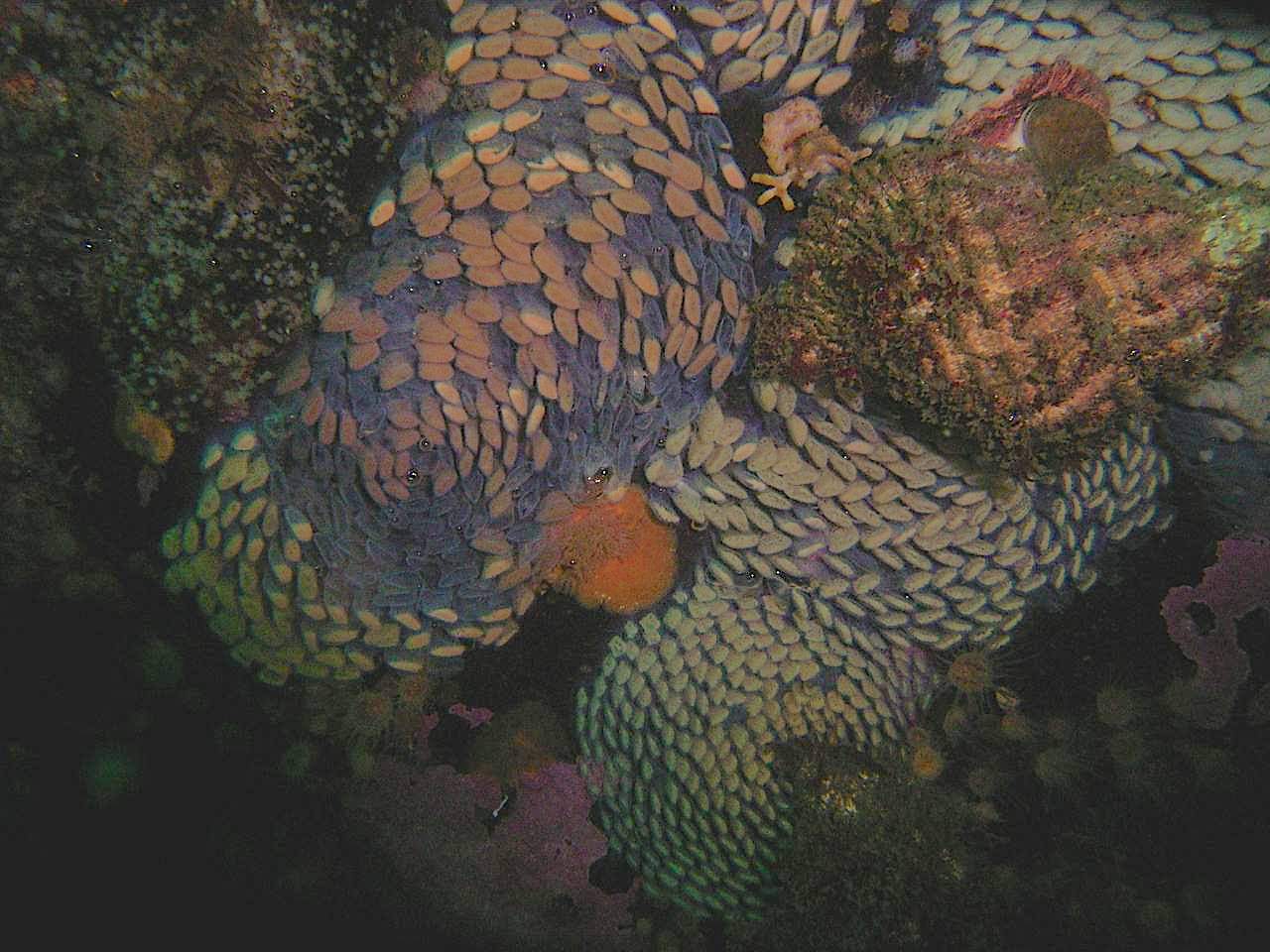General Description: The Hairy Oregon Triton is the largest intertidal snail on the west coast. Measuring from 100 – 150mm in length. Containing 5 -6 whorls the outside of the shell is covered with thick dark brown hairy periostracum. It was first discovered in 1848 by Redfield. The state of Oregon proclaimed the Hairy Oregon Triton its state shell because of its honourable heritage and its attractive shell.
Domain Eukarya
Kingdom Animalia
Phylum Mollusca
Class Gastropoda
Order Mesigastropoda
Family Cymatiidae
Genus Fusitriton
Species oregonensis
Common Name: Hairy Oregon Triton
Reproduction: Each triton is one gender. Pairing of tritons occurs from spring to the end of July. After mating the female tritons lay the eggs on vertical surfaces and under rock ledges. The eggs are placed in rectangular capsules in a spiral pattern. Each capsule contains 1600- 2000 eggs. Eggs measure about 150 um (micrometres). Upon hatching, the veligers a form of planktonic larvae, take about 12 weeks before beginning to scavenge for themselves.
Habitat: The Hairy Oregon Triton lives in from the intertidal zone to 90m depth. Living from Alaska to as far south as San Diego, California. Primarily living on rocks, but will also live on sandy areas. The Hairy Oregon Triton lives in both areas of high wave exposure and sheltered areas.
Feeding: This predatory carnivorous snail eats primarily tunicates and ascidians but also chitons and sea urchins, some scientists suspect it maybe a carnivorous scavenger as well. Like many other whelks, this triton drills through the shell of its prey using its radula.
Predators: The main predator of the Hairy triton is the sea star. As it is a well defended snail with a thick shell and its operculum, most predators find it too difficult to kill.
Interesting Associations: The shell of the triton will often be occupied by large hermit crabs particularly the species after their death.
References Cited:
Edward F. Ricketts, Jack Calvin, and Joel W. Hedgpeth, Between Pacific Tides,1985
Eugene N. Kozloff, Marine Inverebrates of the Pacific Northwest, 1996
Megumi F. Strathmann, Reproduction and Development of Marine Invertebrates of the Northern Pacific Coast, 1987
Other Members of the Phylum Mollusca at Race Rocks.
and Image File |
 The Race Rocks taxonomy is a collaborative venture originally started with the Biology and Environmental Systems students of Lester Pearson College UWC. It now also has contributions added by Faculty, Staff, Volunteers and Observers on the remote control webcams. The Race Rocks taxonomy is a collaborative venture originally started with the Biology and Environmental Systems students of Lester Pearson College UWC. It now also has contributions added by Faculty, Staff, Volunteers and Observers on the remote control webcams. |
Dec. 2001 Joshua Vanwyck, PC yr. 28
